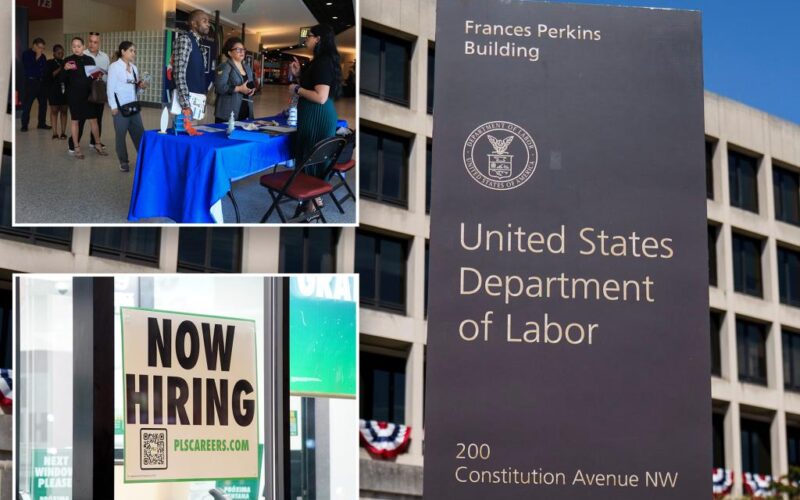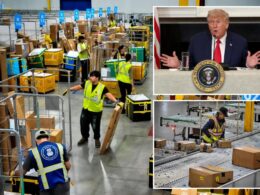Private payrolls dropped by the most in two and half years — a surprise dip that comes ahead of the Federal Reserve’s decision on whether to cut interest rates later this month as a government shutdown looks poised to halt the release of key economic data.
Payrolls at US companies declined by 32,000 in September, far below estimates of 50,000 added jobs in the latest sign of labor market weakness, according to an ADP report released Wednesday.
It was the biggest slide in private payroll growth since March 2023, and followed a revised decline of 3,000 in August – down from initial estimates of growth of 54,000.
It’s also likely the last labor market insight for some time, as funding impasses in Washington, DC, prompted the first government shutdown since President Trump’s first term in 2018.
If the shutdown continues, the Bureau of Labor Statistics’ nonfarm payrolls report – which typically takes precedence over the ADP release and is considered far more comprehensive and reliable – will not be released on Friday. The Labor Department also isn’t expected to publish its weekly jobless claims count on Thursday.
The release of the BLS payrolls report, which unlike the ADP includes government jobs, has not been delayed since 2013.
“Ordinarily, ADP’s estimate of monthly employment is of secondary importance to macroeconomic trainspotters. It’s usually used mostly to preview job growth in the government’s employment report,” Bill Adams, chief economist for Comerica Bank, said in a note Wednesday.
But financial markets and the Fed will likely place greater importance on the private payrolls release – and the weaker-than-expected data makes policymakers even more likely to issue another quarter-point interest rate cut at their meeting later this month, Adams added.
The Fed slashed rates by a quarter point last month in the first cut since December 2024, after Chair Jerome Powell said concerns about softness in the labor market were outweighing inflation fears.
While the US economy expanded at a strong 3.8% pace in the second quarter, worries over the labor market have persisted – even as the unemployment rate has remained at a relatively tame 4.3%.
But hiring has stalled as employers remain anxious over economic uncertainty and trade tensions from Trump’s tariffs.
“Despite the strong economic growth we saw in the second quarter, this month’s release further validates what we’ve been seeing in the labor market, that US employers have been cautious with hiring,” Nela Richardson, chief economist at ADP, said in a statement.
September job losses were somewhat offset by a 33,000 increase in education and health services as schools reopened and healthcare continued its strong hiring trend, according to the ADP report.
Leisure and hospitality suffered a loss of 19,000 as the crucial vacation season wound down.
The other services category saw a drop of 16,000, while professional and business services declined 13,000.
Trade, transportation and utilities lost 7,000 jobs, while construction fell 5,000.
Broader data showed service providers decreased 28,000 and goods producers lost 3,000.
Businesses with fewer than 50 employees shed 40,000, while companies with 500 or more staffers added 33,000.
Wage growth continued to slow, as those who changed jobs saw a 6.6% increase in pay – the lowest rate in a year, according to the ADP.
Those who stayed in the same role saw 4.5% gain, little changed from the month before.
ADP’s data is based on payrolls covering more than 26 million private-sector employees.
Meanwhile, the BLS has been in a state of tumult for about two months after Trump in August abruptly fired Erika McEntarfer, the department chief, accusing her of rigging the jobs data after a weak batch of figures.
On Wednesday, the White House withdrew its nomination of EJ Antoni, the conservative Heritage Foundation economist, to lead the agency. It said Trump would announce a new pick soon.








